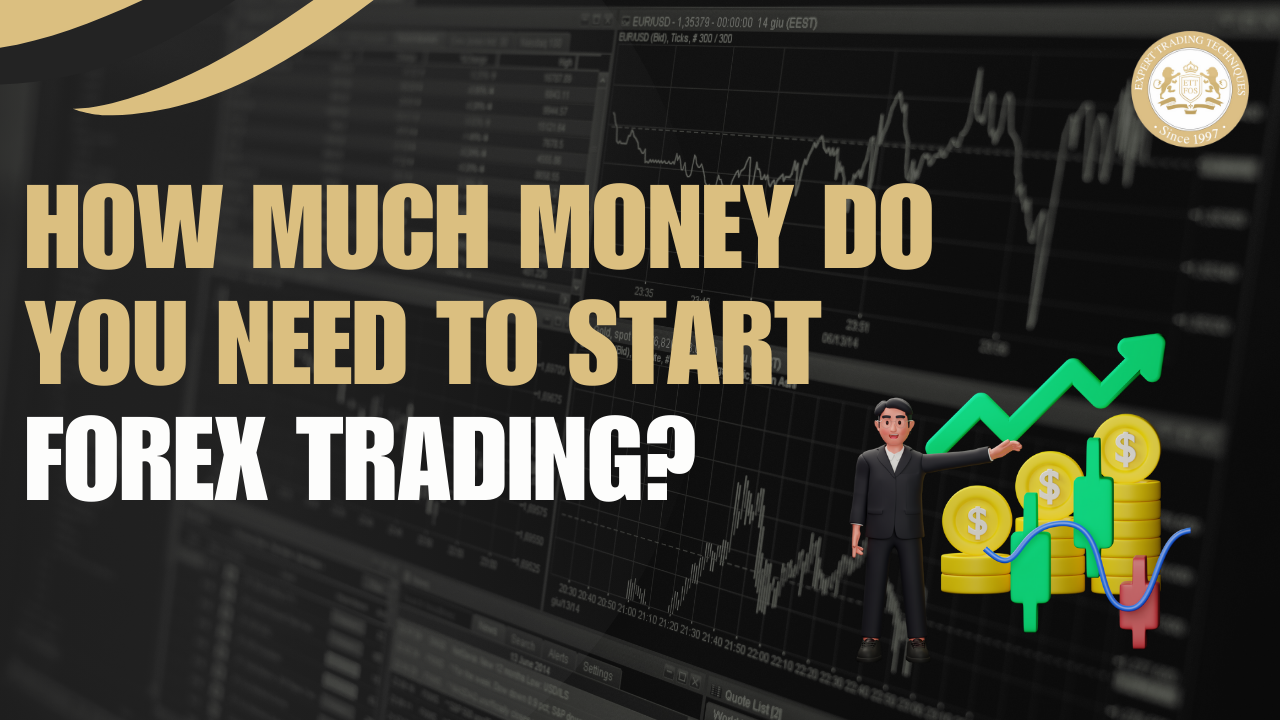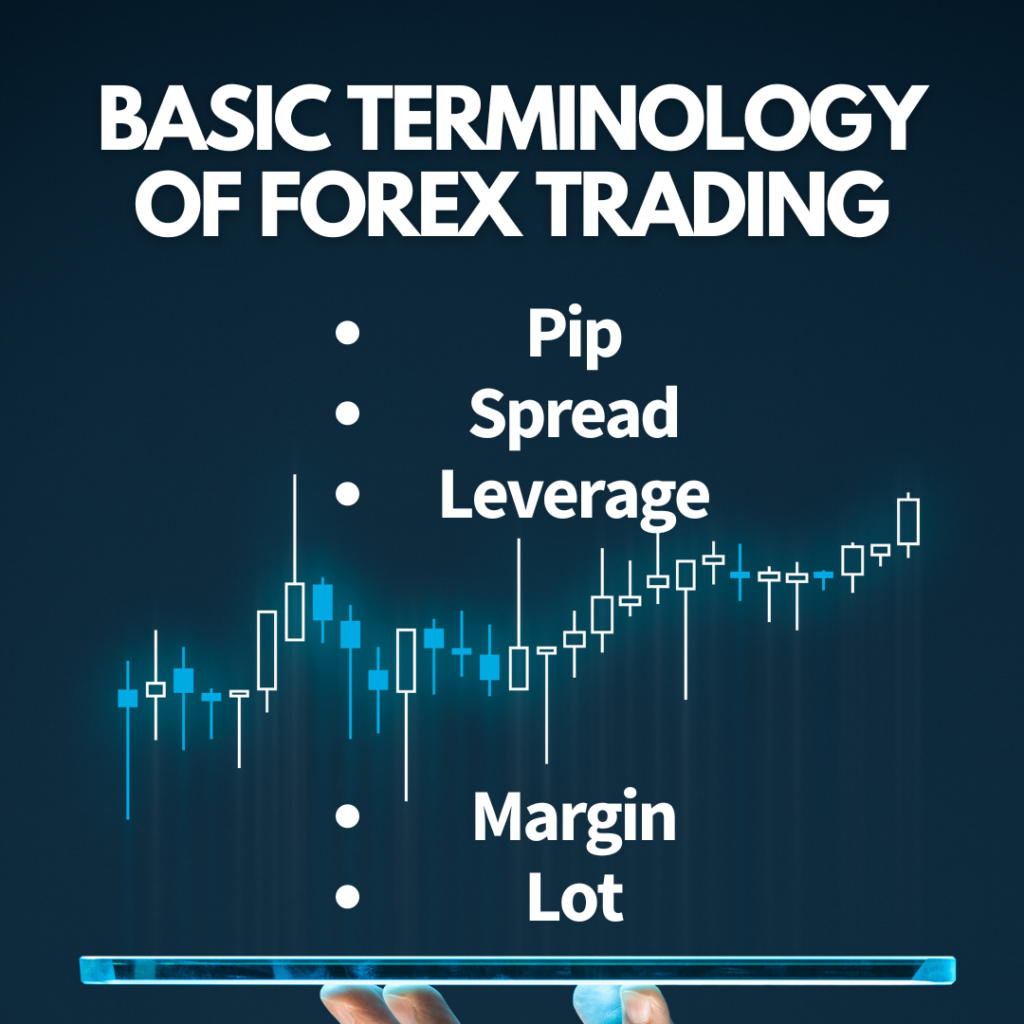
When you first hear about forex trading, the sheer scale and complexity of the financial markets might make you think you need a small fortune to get started. It’s easy to imagine that only those with deep pockets can take a bite out of the forex pie. However, let me clear up a common misconception: you don’t need a massive bankroll to begin your journey in forex trading.
Understanding how much money you need to start forex trading is crucial for anyone considering this path. The reality is, forex trading is accessible to many, regardless of the size of their initial investment. While it’s true that having more capital can provide greater flexibility and potential for returns, you can still make meaningful strides with a smaller amount. However, starting with a modest amount comes with its own set of advantages and limitations. It’s about making smart choices and understanding the financial landscape of forex trading, not just throwing a large sum of money at it.
In this guide, we’ll break down what you need to know about the financial requirements for forex trading. We’ll explore the different capital levels you might start with, how to manage your investment wisely, and the real cost of trading. By the end of this guide, you’ll have a clear picture of is forex trading profitable, how much money is reasonable to start with and how you can make the most of it.
Also Read: Is It Possible to Profit Consistently in Forex Trading?

Before you start trading forex, it’s important to get familiar with some key terms. Understanding these terms will help you make better trading decisions and avoid confusion.
A pip stands for “percentage in point” and is the smallest price move a currency pair can make. It’s usually the fourth decimal place in a price quote. For example, if the EUR/USD moves from 1.1000 to 1.1001, it has moved one pip.
The spread is the difference between the buying price (ask) and the selling price (bid) of a currency pair. It’s how brokers make money from your trades. A smaller spread means you pay less to enter and exit trades. This is an essential factor in understanding forex trading costs.
Leverage allows you to control a large position with a relatively small amount of money. For example, with 100:1 leverage, you can trade $100,000 worth of a currency pair with just $1,000 of your own money. While leverage can amplify profits, it also increases the risk of losses.
Margin is the amount of money required to open and maintain a leveraged position. It’s like a security deposit that ensures you can cover potential losses. If your account balance falls below the required margin, you may get a margin call to add more funds.
In forex trading, a lot refers to the size of the trade. There are standard lots (100,000 units), mini lots (10,000 units), and micro lots (1,000 units). Choosing the right lot size helps you manage risk and control your exposure in the market. Here is table for more clarity:
| Term | Definition |
| Pip | The smallest price movement in a currency pair. |
| Spread | Difference between the bid and ask price. |
| Margin | Required amount to open a leveraged position. |
| Leverage | Ratio of the trader’s funds to the size of the position. |
| Lot | Size of the trade. |
To start forex trading, you need to consider several financial requirements. Here’s a straightforward look at what you’ll need:
This is the amount of money you need to open your trading account. Different brokers have different minimum deposit requirements, usually ranging from $100 to $500. This deposit is used to start trading and cover any potential losses. The minimum deposit forex can vary, so it’s essential to check with your chosen broker.
Besides the initial deposit, having extra trading capital is essential. This extra money helps you manage trades better and handle unexpected market moves. While you can start with a small amount, having $1,000 or more is generally recommended for a more comfortable trading experience.
When you trade with leverage, you’re borrowing money from the broker to control a larger position. The margin is the amount of your own money required to open and maintain these leveraged trades. Be aware that if your account falls below the margin requirement, you might face a margin call to add more funds.
Forex trading involves costs such as spreads (the difference between the buying and selling price) and sometimes commissions. These costs can add up, so it’s important to factor them into your trading plan.
Depending on the broker and platform, you might have extra costs like fees for using certain tools or platforms. Make sure you understand these costs before starting.

When you start forex trading, it’s important to know about all the costs involved beyond just the initial deposit. Here’s a clear breakdown:
Every trade has a spread, which is the difference between the buying price (ask) and the selling price (bid). This is a primary cost of trading and can vary depending on the broker and currency pair. A smaller spread means lower costs for each trade.
Some brokers charge a commission on each trade in addition to the spread. This can be a fixed fee or a percentage of the trade amount. It’s crucial to check if your broker charges commissions and how they affect your overall trading costs.
If you hold a trade overnight, you might incur swap rates or rollover fees. These are interest fees based on the difference between the interest rates of the two currencies you’re trading. They can either be a cost or a credit, depending on the direction of your trade.
While many brokers offer free trading platforms, some might charge for advanced features or additional tools. Make sure you know if there are any costs associated with the platform you use. For example, platforms like MetaTrader 4/5 are often free, but advanced charting tools and automated trading software can cost anywhere from $50 to $500.
Some brokers charge fees for withdrawing funds from your trading account or if your account remains inactive for a period. Check your broker’s fee structure to avoid unexpected costs.
Be aware of any additional hidden costs, such as fees for customer support or for accessing certain types of market data.
Also Read: Best Strategies To Avoid Loss In Forex Trading?

Mastering risk management in forex trading and preserving your capital are crucial for long-term success in forex trading. Here’s how you can do it effectively:
Decide how much money you’re willing to risk in total. Only use money you can afford to lose without affecting your daily life. This helps you avoid emotional trading and makes it easier to stick to your plan. This is also the best strategy to avoid loss in forex trading.
A stop-loss order automatically closes your trade when the price reaches a certain level. This helps limit your losses on any single trade and keeps you from losing more than you’re comfortable with. For example, if you set a stop-loss at 1.1000 and your entry point is 1.1050, your position will close if the price falls to 1.1000, limiting your loss.
Don’t risk too much on any one trade. Use a position size that keeps your potential loss within a small percentage of your trading capital, like 1-2%. This way, one bad trade won’t wipe out a significant portion of your funds.
Leverage lets you control larger positions with a smaller amount of money, but it also increases risk. Use leverage cautiously and avoid over-leveraging, as it can lead to bigger losses.
Don’t put all your money into a single trade or currency pair. Diversifying helps spread risk and reduces the impact of a single trade going wrong. Stick to your trading plan and avoid making impulsive decisions based on emotions. Emotional trading can lead to poor decisions and bigger losses.
Regularly review your trades and risk management strategy. Adjust your approach based on what’s working and what isn’t to keep improving your trading performance.
You can start investing in forex with an amount that fits your budget. The forex market is accessible, and you can begin trading with as little as $10. However, the amount you choose to invest should align with your reasons for trading and your trading style. For example, some platforms allow you to open an account with just $100, but this low entry point can be risky due to the high leverage typical in forex markets. Trading with a small capital has both advantages and disadvantages. While a disciplined trader can manage risk effectively, a smaller investment increases the potential for significant losses, especially if a stop-loss order isn’t executed properly in a volatile market. To better handle market fluctuations and unexpected events, a more realistic starting capital is around $2,500. This amount provides a safer buffer and improves your chances of managing risks and absorbing potential losses.
Trading with the minimum deposit forex has several practical advantages, especially for beginners or those looking to test their strategies without risking too much. Here are the key benefits:
Using a smaller amount of capital limits your financial exposure. This means if the market moves against you, the losses will be relatively small compared to trading with a larger sum. It’s a good way to learn the ropes of forex trading without facing significant financial setbacks.
Starting with a minimal investment allows you to gain valuable trading experience and understand how the forex market works. You can practice different strategies, get accustomed to the trading platform, and learn from mistakes without risking large amounts of money.
Trading with less money can help reduce the emotional stress that often comes with handling larger sums. When you’re not overly concerned about losing significant amounts of money, you can focus more on refining your trading skills and strategy.
With a smaller amount, you can afford to experiment with various trading strategies and techniques. It’s easier to test new approaches and refine your methods without the fear of major financial loss.
Trading with a minimum amount often involves lower transaction costs and fees. This means you can manage your budget more effectively and avoid being eaten up by trading costs.
Starting small allows you to build your trading account gradually. As you gain confidence and experience, you can incrementally increase your investment, scaling up your trading activity at a pace that suits your learning curve.
Also Read: How Did Forex Trading Change Your Life?

Starting forex trading with limited capital is entirely feasible, but it requires a strategic approach to make the most of your investment. Here’s a straightforward guide to help you get started:
Look for a forex broker that allows low minimum deposits and offers micro or nano lots. This lets you trade with smaller amounts of money and manage your risk more effectively. Ensure the broker also has low spreads and reasonable fees to maximize your trading potential. Brokers like XM and Forex.com are known for their low minimum deposit requirements.
With limited capital, it’s crucial to manage your risk carefully. Use tight stop-loss orders to protect your investment and avoid risking more than you can afford to lose on any single trade. Keeping your trade sizes small and setting clear risk limits helps preserve your capital.
Forex trading often involves leverage, which lets you control larger positions with a smaller amount of money. While leverage can amplify gains, it also increases risk. Use lower leverage to avoid substantial losses and ensure you don’t overextend your limited capital.
Before risking real money, practice with a demo account to familiarize yourself with the trading platform and develop your strategies. This allows you to learn without financial pressure and refine your skills in a risk-free environment. Most brokers, including IG and OANDA, offer free demo accounts with virtual funds.
Choose trading strategies that minimize costs and don’t require large capital. For example, day trading or scalping can be effective with smaller accounts if you focus on low spreads and avoid high transaction fees.
Stick to your trading plan and avoid making impulsive decisions. Continuous learning and staying updated on market trends help you make informed decisions and adapt your strategies as needed. Companies like ETTFOS offer comprehensive trading courses that cover various markets, including forex. Their training provides powerful, practical strategies that have been proven effective over decades. The ETTFOS courses cover everything you need to start, whether you’re interested in commodities, stock markets, forex, cryptocurrency, or options trading.
These courses are designed to be a complete solution, offering unique insights and methods that are hard to find elsewhere. If you’re new to trading or looking to refine your skills, contacting ETTFOS for a one-on-one session with their expert consultants could be a great way to get personalized guidance and start your trading journey with confidence. This the top trading indicator every trader should know.
Also Read: Can Forex Trading Be Chosen as a Job?

When deciding how much to invest in forex trading, the amount of capital you start with significantly affects your trading approach and strategy. Here’s a look at how you can approach trading with different levels of capital—$10, $100, and $1,000—to make the most of your investment and manage risk effectively.
With just $10, your trading capacity is very limited. For instance, if you use a broker that allows trading nano lots (0.001 of a standard lot), your trades will be very small, and your ability to impact or profit from the market will be minimal. This small capital is best for getting accustomed to the trading platform and understanding basic market mechanics without risking significant amounts.
With $100, you have a bit more flexibility but still need to be cautious. You can start trading micro lots, which are larger than nano lots but still small. It’s important to choose a broker with low spreads and low minimum trade sizes to make the most of your capital. Focus on building a solid trading strategy and practicing disciplined risk management. Avoid using high leverage, as the risk of significant losses increases with a small account size. Your goal should be to grow your account gradually while learning the ins and outs of forex trading. For example, if you trade the EUR/USD pair and the minimum trade size is 1,000 units, your $100 investment could allow for multiple trades with smaller risks.
With $1,000, you have more room to maneuver and can trade mini lots. This amount allows for more flexibility in managing trades and setting stop-loss orders. You can afford to take slightly larger positions, which can help in managing risk more effectively. It’s still important to use leverage carefully and to follow a well-thought-out trading plan. This capital level also allows you to diversify your trades across different currency pairs, reducing overall risk. With $1,000, you can start implementing more advanced strategies and refining your trading skills. This is the advanced strategey pro traders use.
When starting out in forex trading, avoiding common pitfalls can save you from significant losses and help you develop a more effective trading strategy. Here are some common mistakes that every trader make and to watch out for:
Using too much leverage can magnify your gains, but it also increases the risk of substantial losses. Stick to manageable leverage levels that suit your account size and risk tolerance. Overleveraging can quickly lead to losing more than you initially invested.
Trading without a clear plan is like driving without a map. Develop a trading plan that includes your goals, risk management rules, and entry and exit strategies. Following a structured plan helps you stay disciplined and make more informed decisions.
Many traders neglect to set stop-loss orders or position sizes that are too large. Always use stop-loss orders to limit potential losses and ensure that you’re not risking more than you can afford to lose on any single trade.
Trading too frequently or with excessive positions can lead to poor decision-making and increased transaction costs. Focus on quality trades rather than quantity, and avoid making trades based on emotional impulses.
Emotional trading can lead to impulsive decisions and losses. Stick to your trading plan and avoid letting fear or greed dictate your trades. Staying objective and disciplined is crucial for long-term success.
The forex market is dynamic, and staying updated on economic news and market trends is essential. Ignoring relevant information can lead to missed opportunities or unexpected losses.
Jumping straight into live trading without practicing on a demo account is risky. Use a demo account to test your strategies and get comfortable with the trading platform before risking real money.
Also Read: Can You Start Forex Trading Without Broker
In summary, starting forex trading requires understanding the basics, managing financial requirements, and planning for costs and risks. Begin with an appropriate amount of capital, use leverage wisely, and maintain a well-defined trading strategy. For further learning and to take the next step in your forex trading journey, consider exploring our ETTFOS Core Masterclass, which provides comprehensive training and strategies for traders of all levels.
You can start with as little as $10 with some brokers, though $500 to $1,000 is recommended for a more comfortable trading experience.
Yes, trading with a small budget is possible, but it requires careful risk management and selection of brokers with low minimum deposit requirements.
Small accounts can face significant risks due to limited capital for managing trades and absorbing losses. Leverage and high trading costs can further amplify risks.
Yes, it’s possible to make money with limited capital, but success depends on effective risk management, a solid trading plan, and disciplined trading practices.